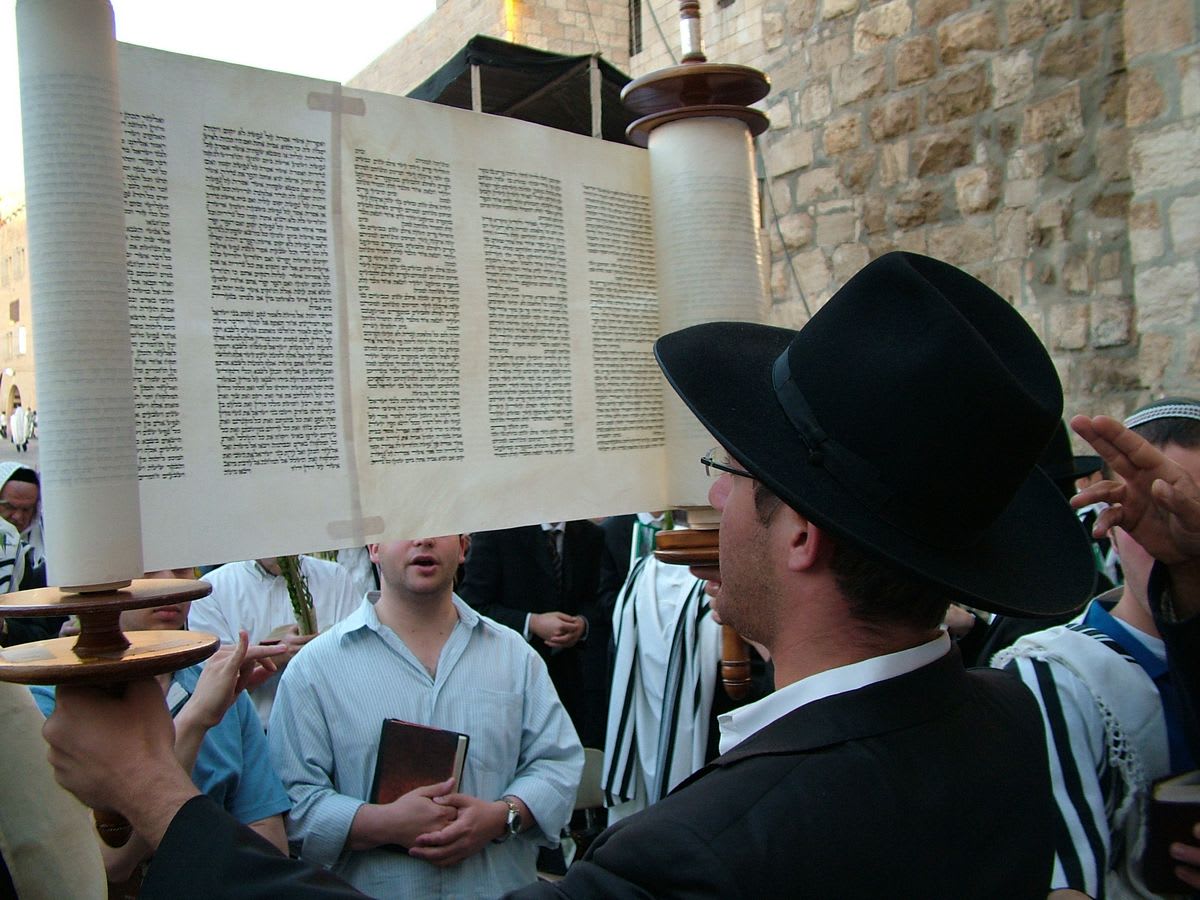There is a very ancient custom to raise the Torah scroll adjacent to its reading, to show the script to everyone in synagogue. “Then he opens the Torah scroll three columns, and raises it so that the writing is facing the people who stand to the right and left, and brings it backward and forward, for it is a mitzvah for all the men and women to see the writing, and bow, and say, ‘And this is the Torah which Moshe placed before the children of Israel'” (Sofrim 14:14).
The source for this custom, according to a passage in the Yerushalmi, is the verse “Cursed be he who does not uphold the words of this Torah, to do them” (Devarim 27:26). The Yerushalmi asks, “Is the Torah falling, [that it needs upholding?] Shimon ben Yakim says, this refers to the chazan who stands” (Yerushalmi Sota 7:4). Many commentators, including Ramban (on Devarim 27:26) explain that this refers to “hagbah”, the person who literally holds the Torah up.
In tractate Megillah, we learn that the person one who rolls up the Torah scroll gets a reward “keneged kulam”, commensurate with all those who received an aliyah (Megillah 32a). Many commentators explain that this refers also to hagbah (See Bach on OC 147). Why is this particular honor so important that its rewards is commensurate with all those who actually read from the Torah?
It seems that the special importance of raising the Torah scroll for all to see is that it represents a relationship to the Torah which is common to everyone. Only a few, those who are called up for an aliyah, are actually able to read the Torah; just as only a small fraction of Jews are learned in the Torah. Quite a large number are able to hear and understand the reading, but by no means all. Likewise, most but by all means not all Jews are able to understand the basics of Torah.
However, the passage from tractate Sofrim emphasizes that during hagbah, the script is carefully shown to all: right and left, front and back, men and women. All Jews are able to understand that the Torah is our common heritage, that we are in possession of the very Torah which was given by Moshe at Mount Sinai, that is, they are able to understand this if the chazan, the representative of the community, takes the trouble to carefully raise up the Torah and to show its script to all.
This explains the passage from the Yerushalmi. A public leader who fails to uphold the Torah, to present it as the common heritage of all, is worthy of censure. And we can read a new insight into the passage from Megillah: the person who raises up the Torah gets a reward “corresponding to all”, that is, due to the fact that he proudly displayed the Torah “before all”, which is the literal meaning of “keneged kulam”.
Rabbi Asher Meir is the author of the book Meaning in Mitzvot, distributed by Feldheim. The book provides insights into the inner meaning of our daily practices, following the order of the 221 chapters of the Kitzur Shulchan Aruch.
The words of this author reflect his/her own opinions and do not necessarily represent the official position of the Orthodox Union.
